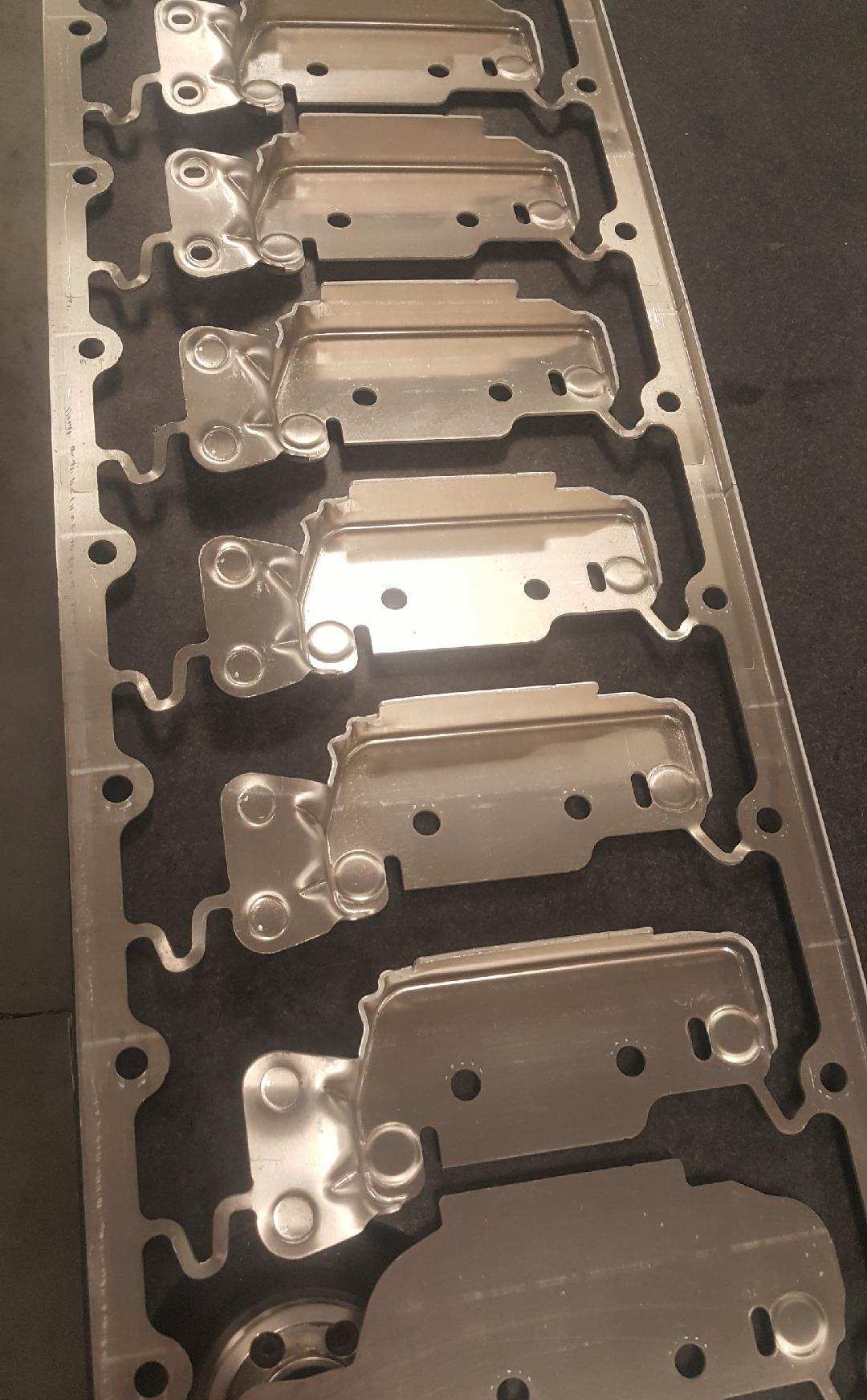Professional Tips for Picking the Right Metal Stamping Solutions for Your Demands
Professional Tips for Picking the Right Metal Stamping Solutions for Your Demands
Blog Article
The Evolution of Steel Marking Procedures: Innovations and Applications
The realm of metal stamping procedures has experienced a transformative trip marked by consistent innovation and adaptation to fulfill the needs of modern industrial methods. The applications span across a range of sectors, each profiting uniquely from the improvements in metal marking procedures.
Conventional Steel Marking Strategies
Conventional metal marking methods have actually long been the structure of producing processes in numerous sectors due to their efficiency and accuracy. The procedure includes creating a steel sheet or coil right into a preferred shape by pressing it between a die and a strike. This approach is widely utilized for producing huge amounts of get rid of high precision at a rapid rate.
Among the crucial advantages of traditional steel marking strategies is the capability to keep tight resistances, guaranteeing that each part fulfills the called for specifications continually. This degree of accuracy is necessary in industries such as automobile, aerospace, and electronic devices, where even small inconsistencies can result in significant concerns.
In addition, typical steel stamping strategies use economical options for automation contrasted to other producing approaches. The capacity to mark parts in quick sequence reduces manufacturing time and lowers labor costs, making it an appealing alternative for companies seeking to optimize their production procedures.
Emergence of High-Speed Stamping

Among the crucial benefits of high-speed marking is its ability to maintain precision and uniformity also at accelerated handling speeds. This accuracy is crucial in industries where tight tolerances and complex styles are needed. Furthermore, high-speed marking allows for the processing of a variety of materials, consisting of light weight aluminum, stainless-steel, and copper, additional increasing its applicability across various industries.
Furthermore, the introduction of high-speed marking has allowed producers to fulfill the growing need for complicated elements in markets such as vehicle, aerospace, and electronics (Metal Stamping). By leveraging the speed and precision of high-speed marking modern technology, business can boost their competitiveness in a swiftly progressing market landscape
Innovations in Tooling Innovation
With the evolution of high-speed stamping allowing enhanced accuracy and performance in steel forming processes, the field of metal stamping has actually seen considerable advancements in tooling modern technology. Tooling modern technology plays an important function in steel stamping operations, influencing elements such as item quality, manufacturing speed, and overall cost-effectiveness. One essential innovation in tooling technology is the advancement of intelligent tooling systems that include sensing units and keeping track of tools to provide real-time information on the stamping process. These systems can identify problems such as tool wear or misalignment, permitting for instant adjustments to keep ideal performance.
By making use of these innovative materials, tooling manufacturers can create passes away and mold and mildews that stand up to the high pressures and temperature levels included in metal marking processes, resulting in longer tool life and better manufacturing performance. Overall, these advancements in tooling modern technology have revolutionized the metal stamping market, allowing suppliers to attain greater degrees of precision, efficiency, and expense financial savings.
Integration of Automation in Stamping
As automation proceeds to improve the landscape of metal marking processes, the integration of automated systems has actually ended up being increasingly common in contemporary manufacturing facilities. Automated systems supply various advantages in steel stamping, consisting of raised performance, enhanced precision, and enhanced security. By integrating automation into marking processes, suppliers can lower cycle times, decrease material waste, and maximize production throughput.
One of the crucial parts of automation in marking is making anchor use of robot arms for jobs such as product handling, part control, and top quality assessment (Metal Stamping). These robotic systems can carry out repetitive and labor-intensive tasks Home Page with rate and accuracy, liberating human drivers to concentrate on even more intricate procedures. Furthermore, automation permits real-time surveillance and change of stamping processes, resulting in higher total procedure control and top quality guarantee
Furthermore, the combination of automation in stamping allows suppliers to attain regular component top quality, meet tight tolerances, and enhance overall performance. As modern technology proceeds to advancement, the role of automation in metal stamping processes is anticipated to increase further, driving innovation and effectiveness in the production market.
Applications Across Diverse Industries
Incorporating steel stamping processes throughout varied industries showcases the versatility and flexibility of this manufacturing method. Additionally, the appliance market benefits from steel stamping procedures to manufacture components for fridges, cleaning devices, and other family home appliances. The flexibility of metal marking processes makes it a beneficial manufacturing technique throughout various industries, demonstrating its relevance in modern manufacturing visit processes.
Conclusion

Report this page